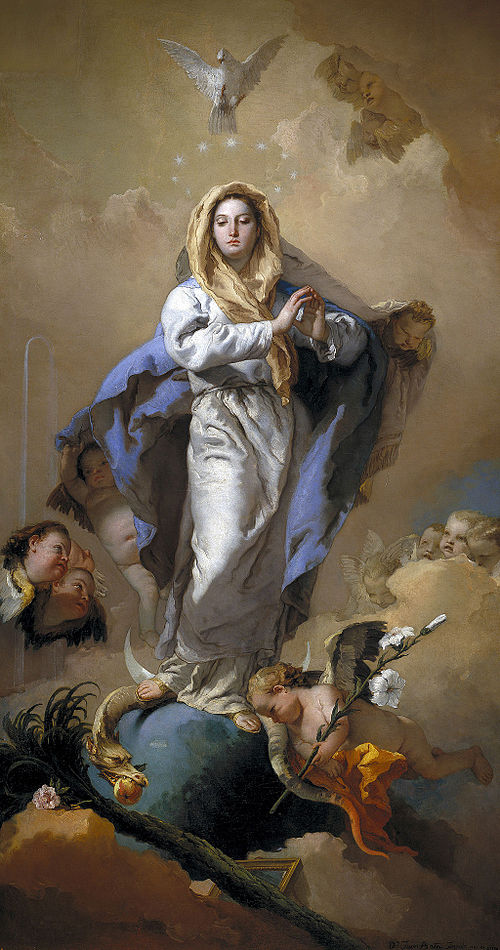1 May 2024
Our Lady, the Rosary, and the Little Office | Year of Prayer 2024
By Joey Belleza, PhD (Cantab.)
In our previous instalment, we considered the recitation of the psalms in the daily celebration of the Divine Office, or Liturgy of the Hours. As we enter the month of May—the month of Our Lady—it is now an opportune time to consider the relationship between the Divine Office and the Church’s devotion to the Mother of God.
The New Testament, specifically the Gospel of Luke, records only one “prayer” by the Blessed Virgin Mary: the Magnificat, or the great hymn of praise which she sung upon her Visitation to Elizabeth, her cousin and mother of John the Baptist. This perfect expression of humility and praise from the greatest woman in history has been of such importance to the Church that its recitation or singing occurs every day at the end of Vespers. In its literary form, it is very similar to many of the psalms of praise, and its various statements follow the typical parallelisms of Hebrew rhetoric, wherein two phrases which move in “opposite directions” actually convey the same meaning. For example, “He has cast down the mighty from their thrones, and has lifted up the lowly,” or “He has filled the hungry with good things; the rich he has sent away empty” express God’s power and mercy through the punishment of evil, on the one hand, and the concurrent exaltation of the poor, on the other. Such constructions are also seen in the Song of Hannah, which is itself a hymn of thanksgiving to God for the miraculous pregnancy which yielded the prophet Samuel. Like the psalms and the Song of Hannah, Mary’s Magnificat is a clear link to the heritage of the Old Testament, and the fact that we sing it daily in the Christian liturgy testifies to our enduring link to the faith of Israel.
While from the early Middle Ages the recitation of the full Psalter according to the one-week cycle was often restricted to priests and religious (who were literate), the ordinary illiterate lay faithful often found ways to participate in daily prayer in their own ways. Repetitions of the Lord’s Prayer or the Hail Mary substituted for the long recitation of each Psalm, and the recitation of 150 Hail Marys (divided into the three sets of mysteries) in place of the 150 Psalms—what we now know as the Rosary—became the laity’s favoured counterpart to the full Divine Office sung by priests and religious. A further development of this practice led to the association of a smaller set of Psalms as mystically signifying some aspect of the Blessed Virgin’s role in salvation history. This became the so-called “Little Office of the Blessed Virgin Mary,” a practice so beloved that by the tenth century, clergy were required to pray the hours of the Little Office in addition to the hours of the full Divine Office. In some religious communities, their members were taught to pray “Our Lady’s Matins” in private upon waking up and while making one’s bed, in order to prepare for the communal recitation of Matins according to the Divine Office.
In this Year of Prayer, perhaps we might delve into the mysteries of Mary’s life, not only by meditating upon the mysteries of the Rosary, but by exploring those Psalms which the Little Office has set aside for Our Lady. The Little Office might indeed be a way for us to get into the habit of praying the Psalms, so that eventually we might learn to pray the full Divine Office or Liturgy of the Hours with greater ease. In this way, the Psalms which point to the Blessed Virgin might lead us to the recitation of the full Psalter, which is itself a prefiguration of the life of Christ—and thus we might pass, as Saint John Paul II loved to say, ad Iesum per Mariam: to Jesus through Mary.

